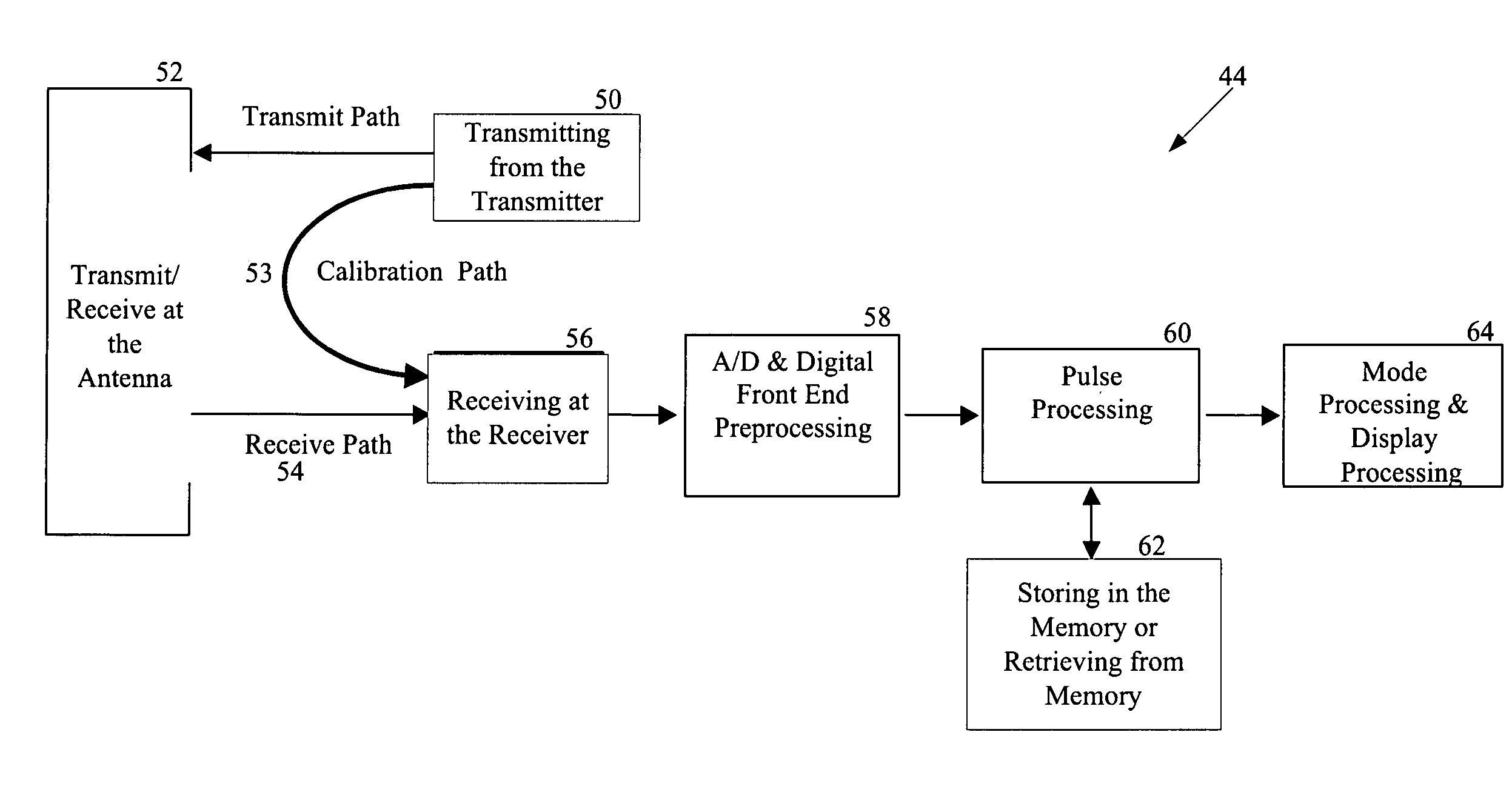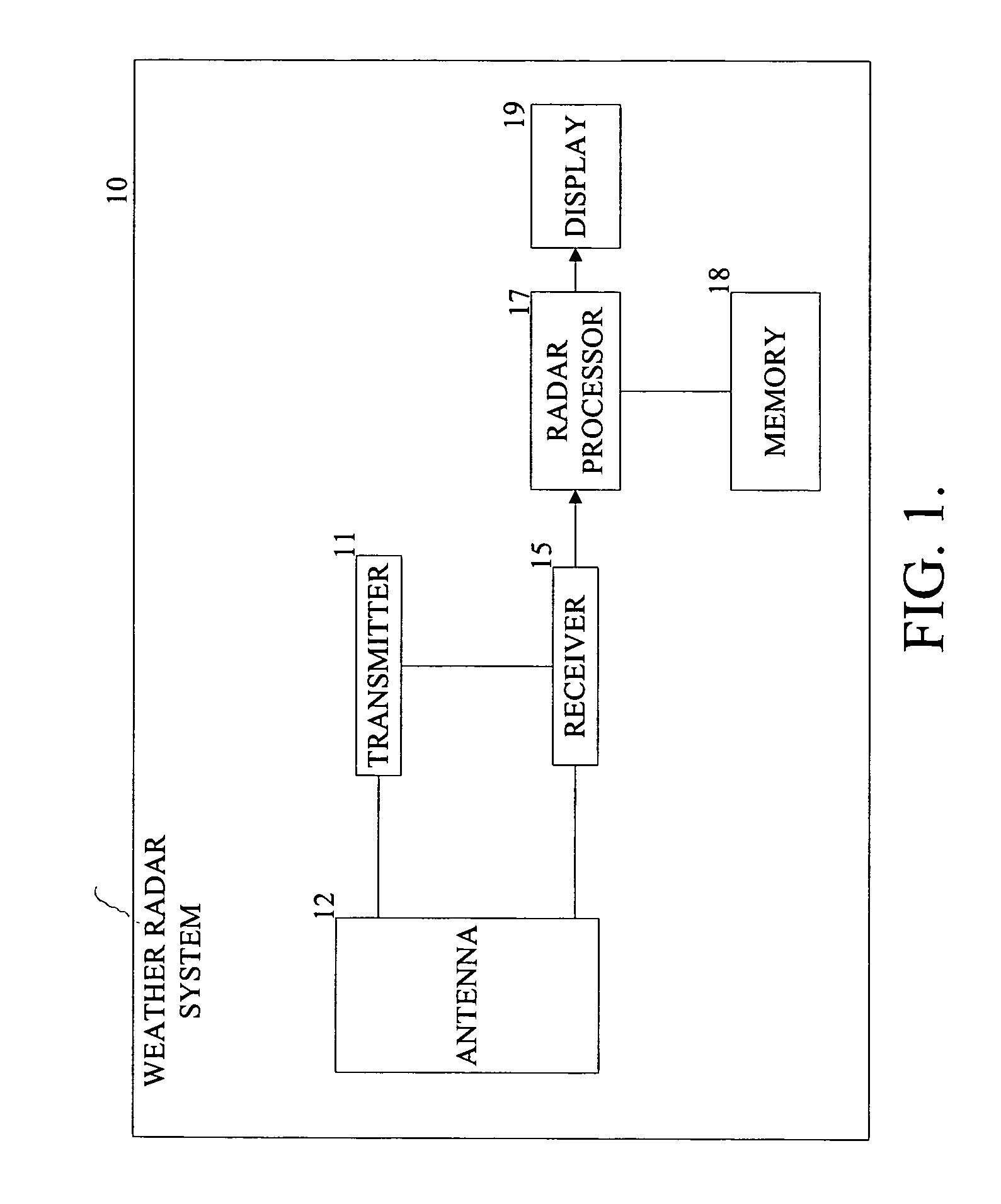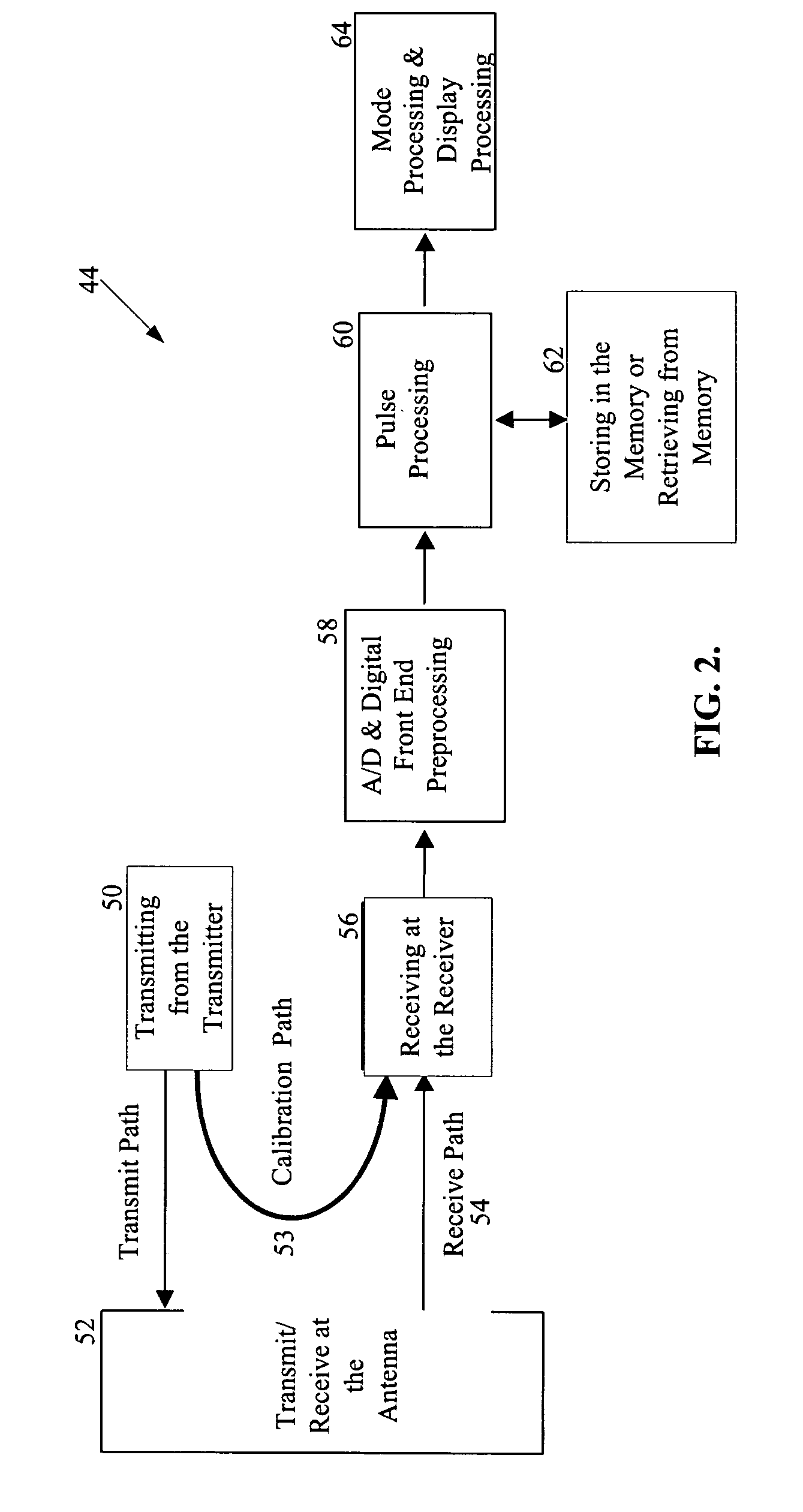RF channel calibration for non-linear FM waveforms
a non-linear waveform and channel calibration technology, applied in the field of weather radar calibration, can solve the problems of increasing the range sidelobe after compression, reducing the error budget required for the analog front end, and reducing the accuracy of the signal
- Summary
- Abstract
- Description
- Claims
- Application Information
AI Technical Summary
Benefits of technology
Problems solved by technology
Method used
Image
Examples
Embodiment Construction
[0012]FIG. 1 illustrates a pulse-compression weather radar system 10 that determines a calibration filter using the actual waveforms produced by the radar system 10 and uses this filter when processing the received pulse compression radar signals. The radar system 10 includes a transmitter 11, an antenna 12, a receiver 15, and a radar processor 17 with memory 18.
[0013]Referring to FIG. 2, a process 44 performed by the radar system 10 is shown. At steps 50 and 52, the transmitter 11 generally sends pulse-compression waveforms out through the antenna 12. At certain times during a scan, the transmitter 11 instead sends one or more calibration waveforms directly to the receiver 15 via a calibration path 53. At step 56, the receiver 15 detects a signal arriving either from the antenna 12 via a receive path 54, or from the transmitter 11 via the calibration path 53. Both types of signals are sent to the radar processor 17 to undergo analog to digital conversion and front-end preprocessing...
PUM
 Login to View More
Login to View More Abstract
Description
Claims
Application Information
 Login to View More
Login to View More - R&D
- Intellectual Property
- Life Sciences
- Materials
- Tech Scout
- Unparalleled Data Quality
- Higher Quality Content
- 60% Fewer Hallucinations
Browse by: Latest US Patents, China's latest patents, Technical Efficacy Thesaurus, Application Domain, Technology Topic, Popular Technical Reports.
© 2025 PatSnap. All rights reserved.Legal|Privacy policy|Modern Slavery Act Transparency Statement|Sitemap|About US| Contact US: help@patsnap.com



